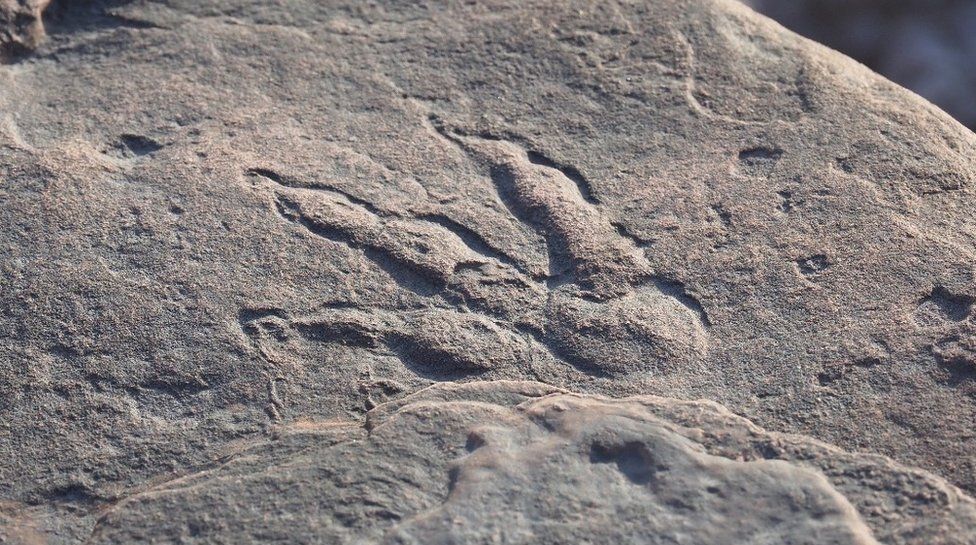Thailand unearths Asia’s oldest dinosaur footprints dating back 225 million years

Thailand has made a colossal leap in palaeontology with the discovery of the oldest dinosaur footprints ever found in the country, and possibly in Asia. The significant find dates back over 225 million years, situating it in the late Triassic period. This monumental discovery occurred at the border between Phetchabun and Khon Kaen provinces, stirring excitement among scientists and dinosaur enthusiasts across the globe.
On January 20, a research team led by Surawet Sutheethorn, Vice Director of the Research and Education Center for Palaeontology at Maha Sarakham University, and Kritsana Sudcha, a geologist from Phu Wiang Dinosaur Museum and Research Center, along with a group of students, embarked on an exploratory mission at the Tat Yai Waterfall area, straddling the border of Nam Nao district in Phetchabun and Phu Pha Man district in Khon Kaen.
This expedition followed a report from the Department of Mineral Resources, which had previously identified ancient footprints belonging to the archosaur group and what appeared to be tracks of sauropod dinosaurs on January 10.
During the expedition, fourth-year biology students Bam and My from Maha Sarakham University discovered a new trail of theropod dinosaur footprints, the oldest of its kind found in Thailand and potentially in all of Asia, according to a study by Peng et al., dated to a mid-Norian age (approximately 218.4 million years ago). The team identified three separate trackways with distinct three-toed prints of theropods. Additionally, they uncovered tracks of two sauropods walking side by side, with both fore and hind footprints visible.
This site at Tat Yai Waterfall is now considered one of the most significant paleontological locations in Thailand. The erosion of the rock formations has created a unique and striking landscape, with layers resembling stacked desserts, giving it the nickname Layer of Cake the only one of its kind in Thailand.
Following this groundbreaking find, the next steps are clear. The team aims to determine the exact age of the rock layer containing the footprints, conduct a detailed analysis of the different prints, and expand the scope of the survey. Baan Dino, a dedicated dinosaur page, revealed that the subsequent operations would include cleaning the sauropod footprints and investigating another newly discovered set of mysterious tracks.
Initial survey
The Department of Mineral Resources provided additional information, stating that the initial survey of the Tat Yai Waterfall area was conducted on January 10, 2024. The site was first discovered in 2023 and initially only featured two trackways of sauropod dinosaurs within the lower mudstone layer of the Huai Hin Lat Formation, estimated to be between 225 and 220 million years old.
In the latest excursion, the team found five additional trackways, including two sauropod paths, two paths from smaller animals, and one trail from crawling archosaurs. The archosaur tracks are of particular interest due to their clear details, including toes, claws, and both fore and hind footprints. These differ from tracks found at nearby Ban Na Po – known for archosaur footprints – and suggest a new species of ancient animal in Thailand yet to be described.
Baan Dino has been instrumental in documenting these findings, reaffirming that these are the oldest vertebrate footprints found in Thailand and the region to date. As the research continues, the scientific community eagerly anticipates further revelations from the Layer Cake Creek site, which could transform our understanding of prehistoric life in Southeast Asia, reported KhaoSod.
Latest Thailand News
Follow The Thaiger on Google News:


























